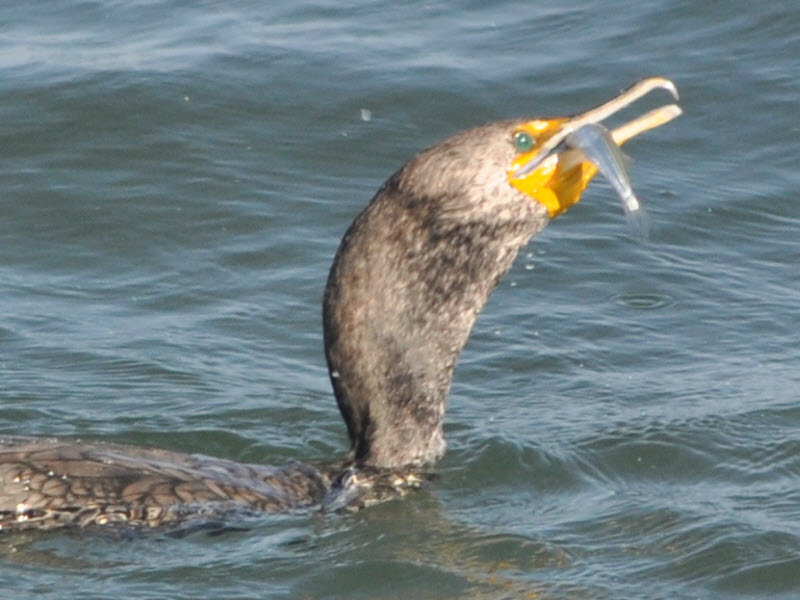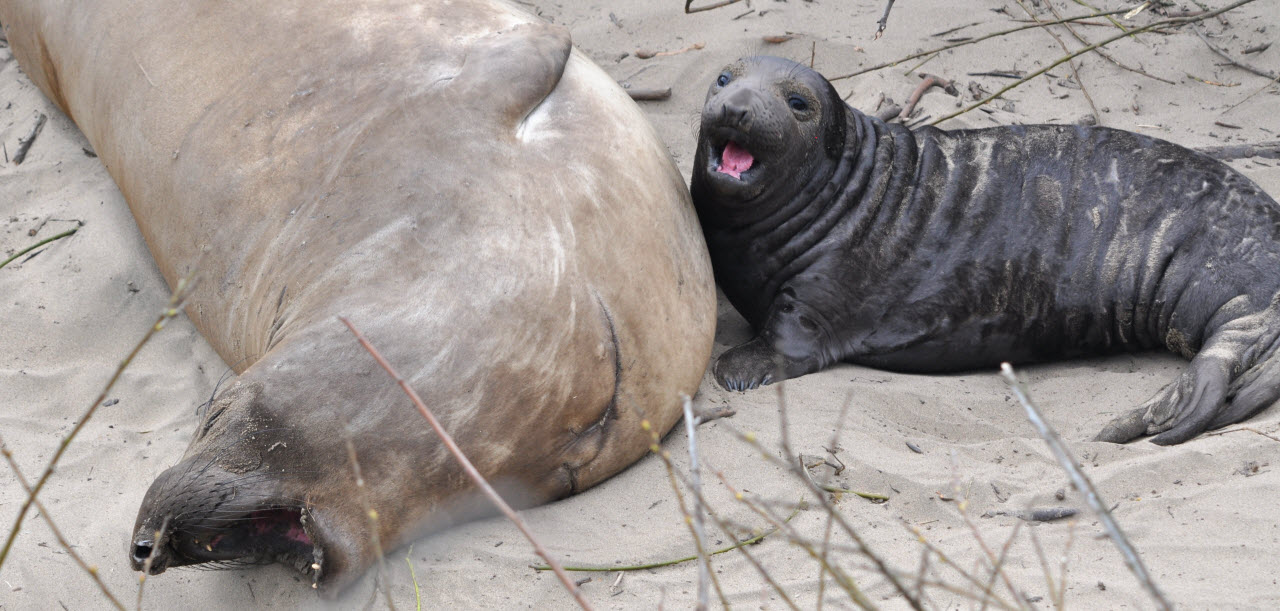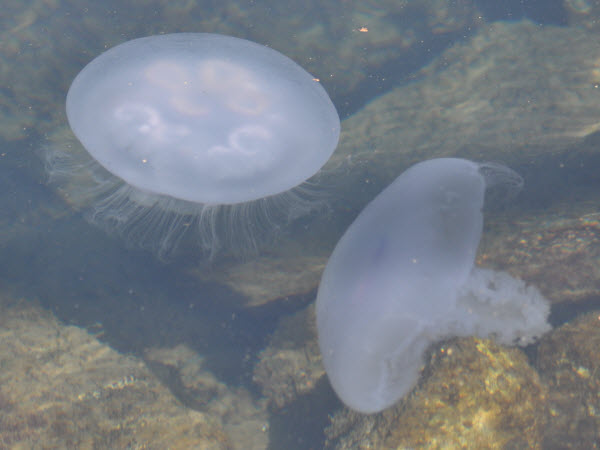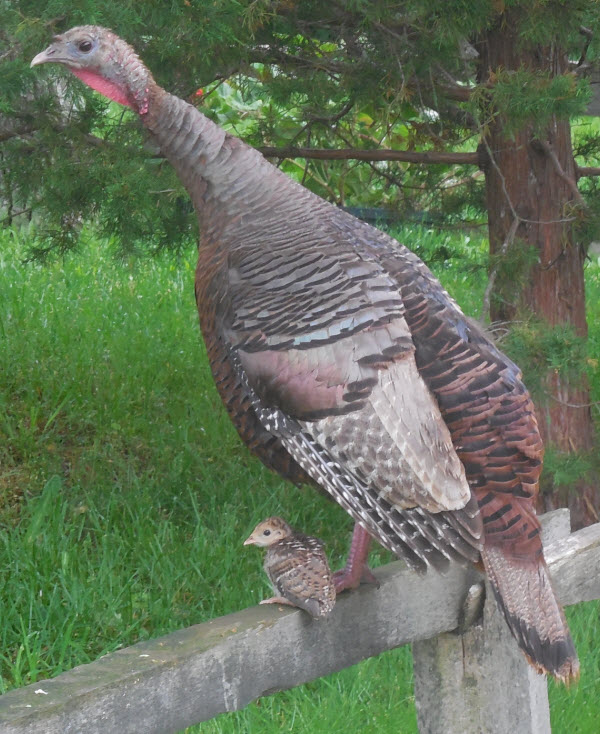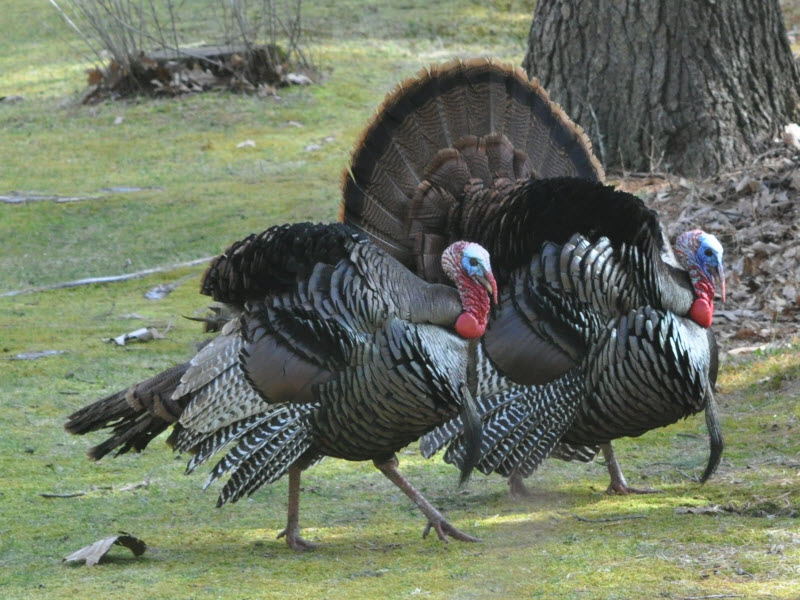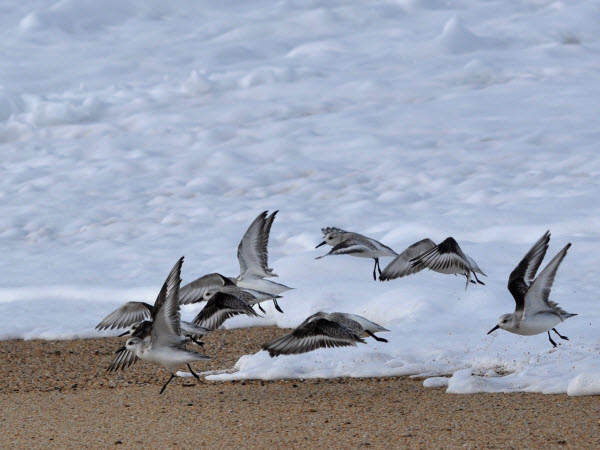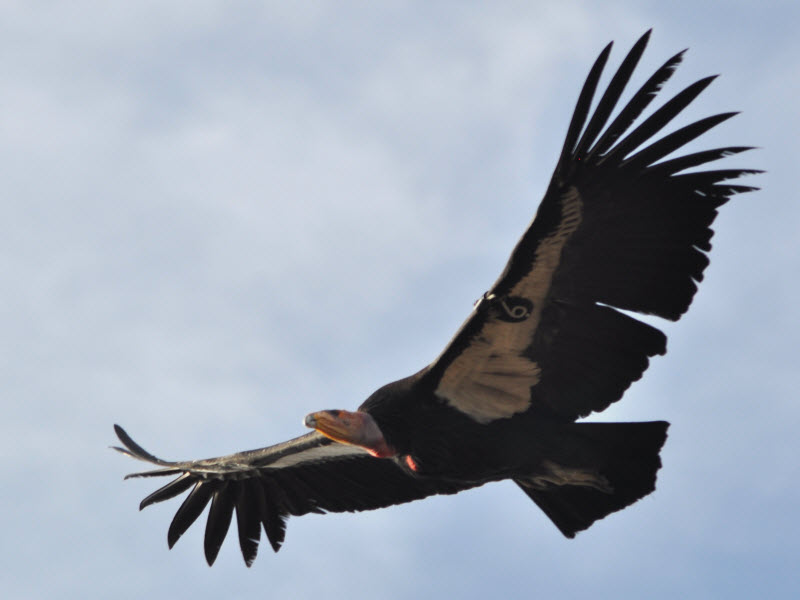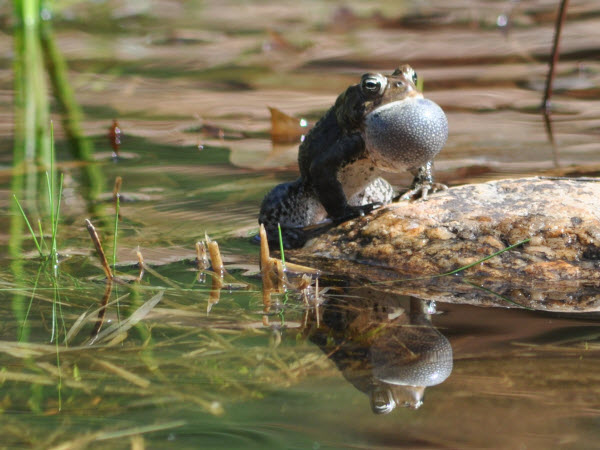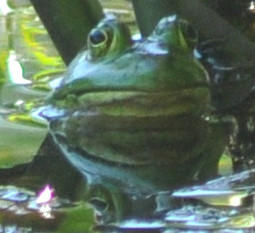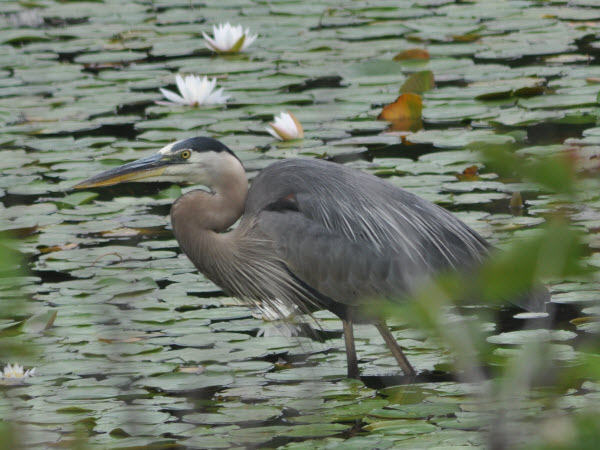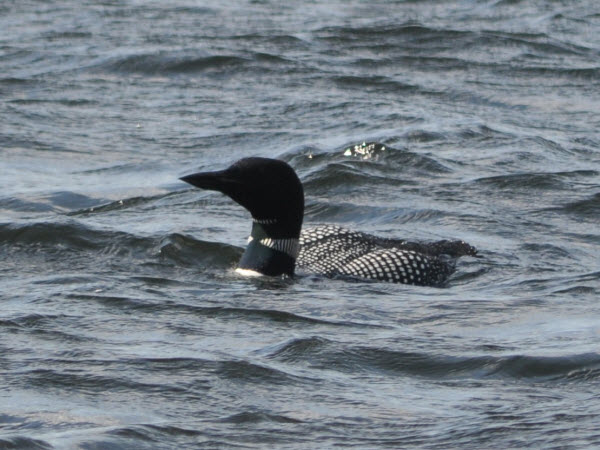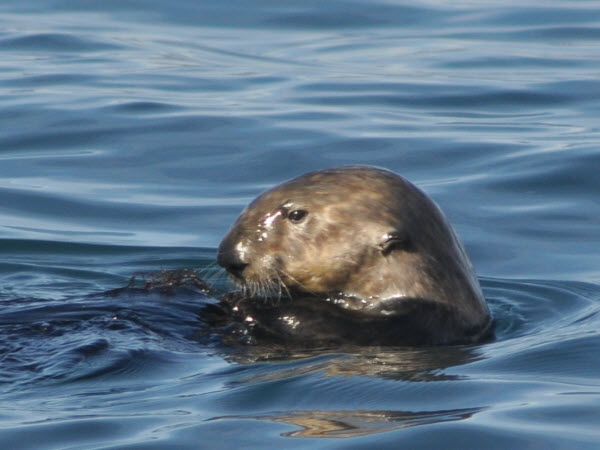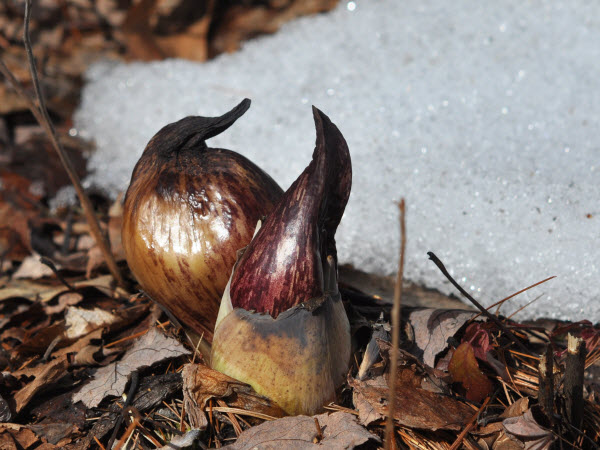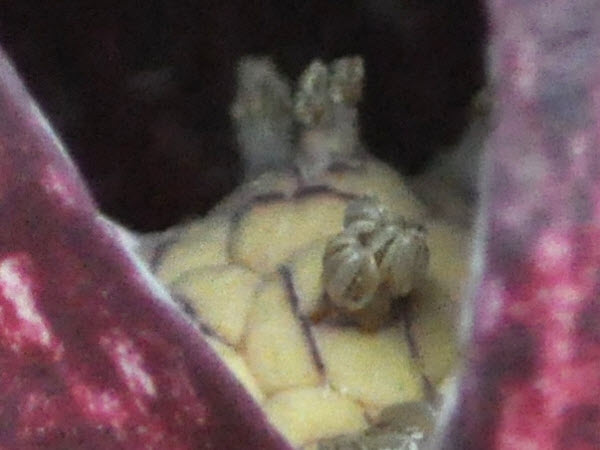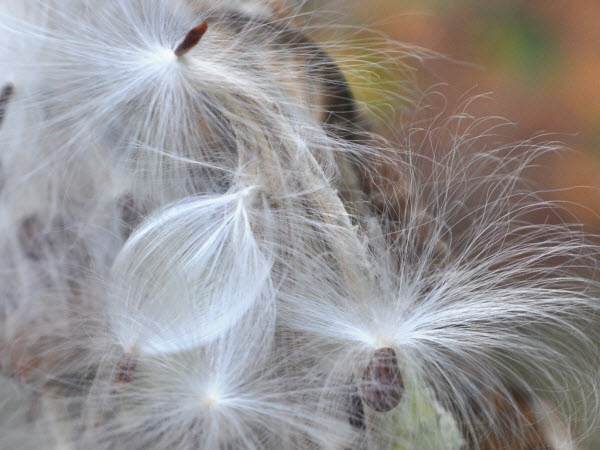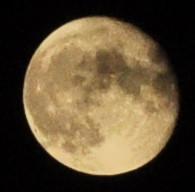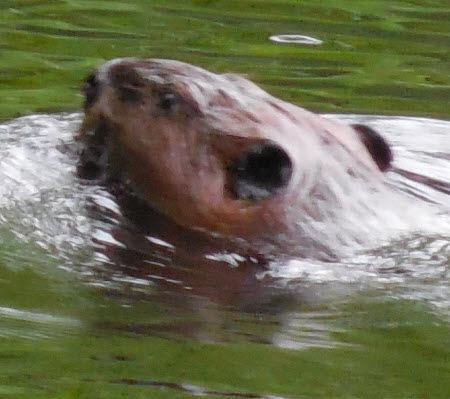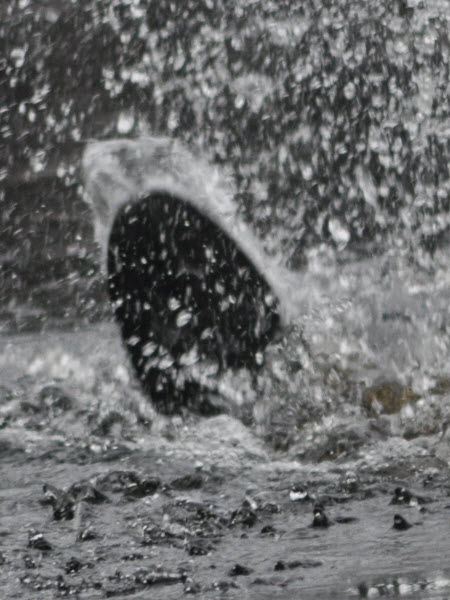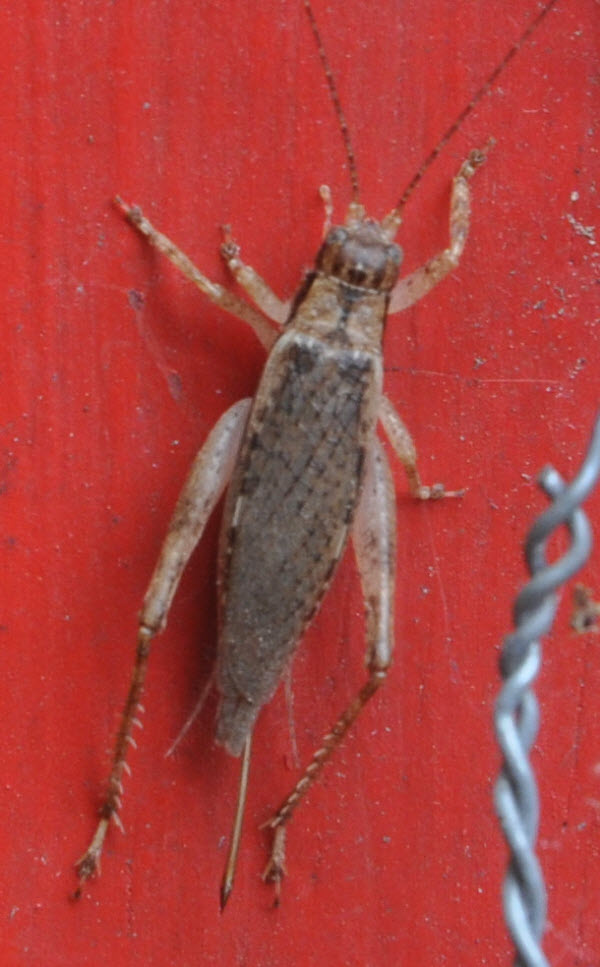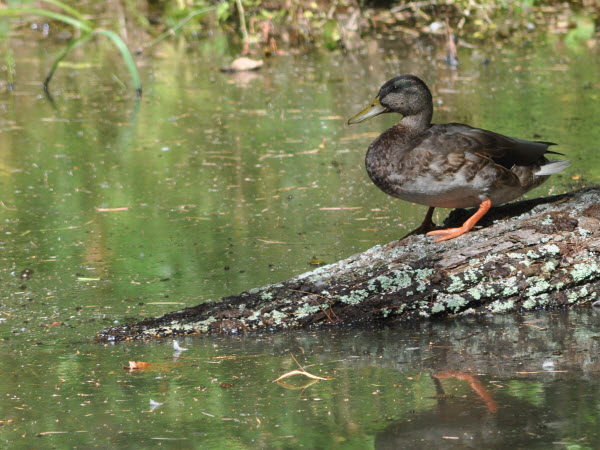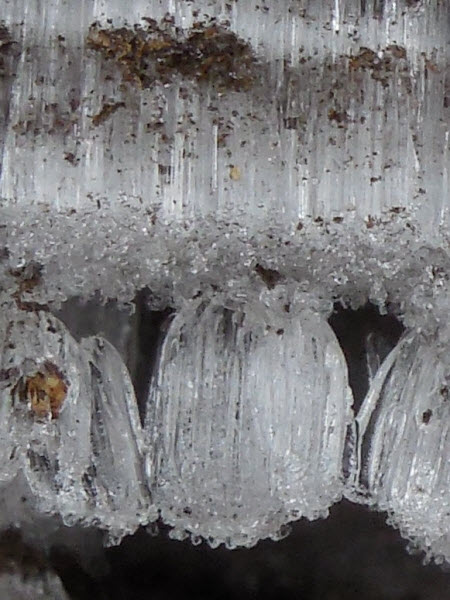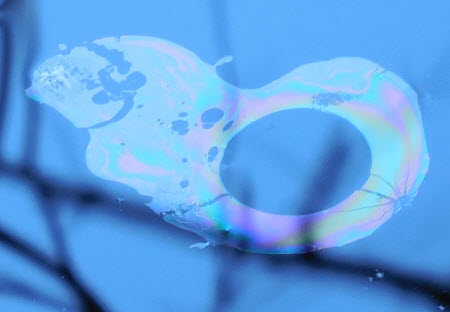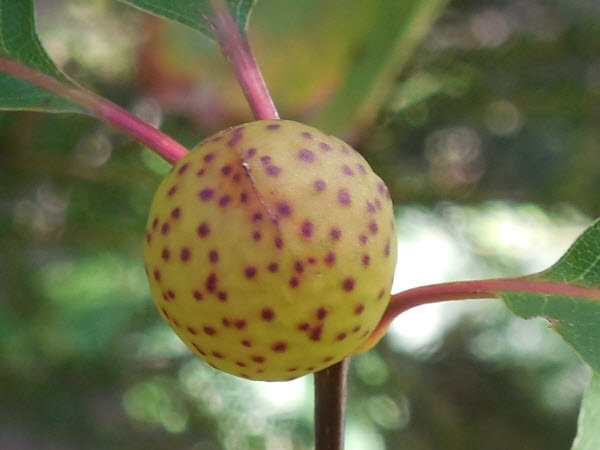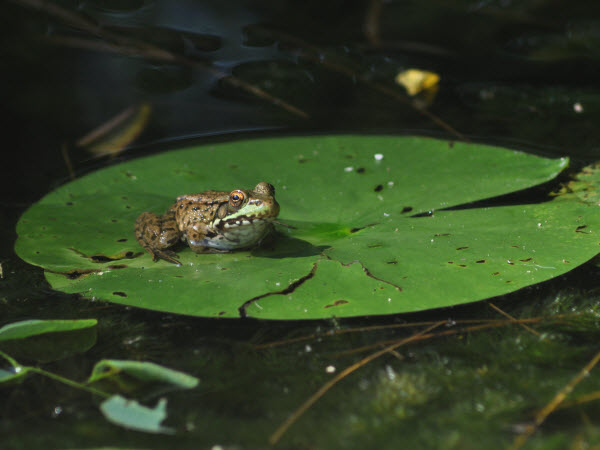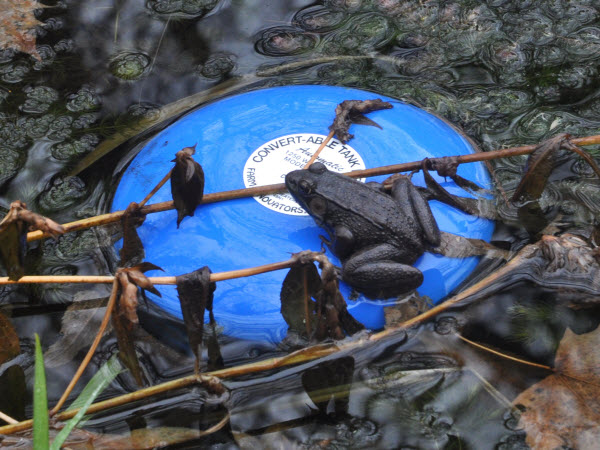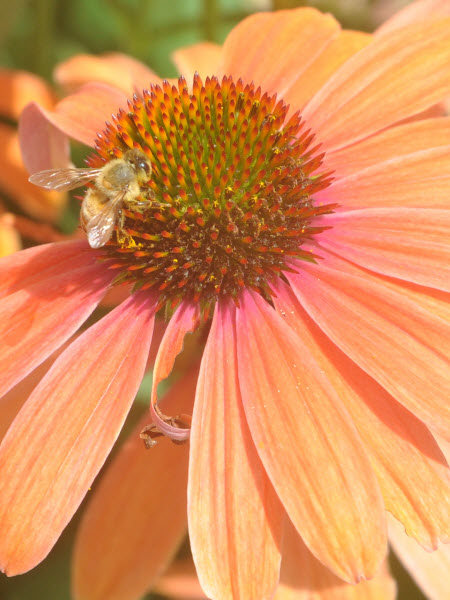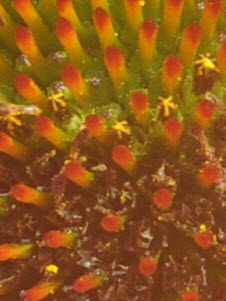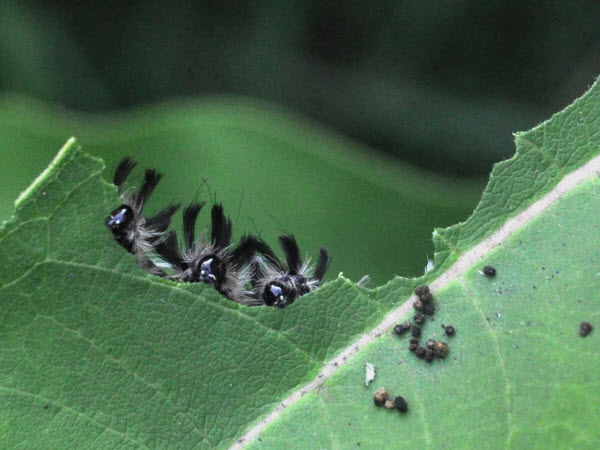A new family of swans - 4 weeks old, June 2020 Gallery/birds/swans
Common Loon - Maine. This Loon was especially accommodating, staying calmly in a small cove very near to shore while I scurried off to fetch my camera, and then allowing me to move about to frame with flowers growing on shore. Gallery/Birds/Loon
Double-crested Cormorant, back from a dive with a fish. This was taken from the commercial wharf at Monterey. Judging by the activity of the Cormorants, there was a school of fish. For this photo I kept the camera trigger pressed while following the bird as it surfaced - and lucked out to have a bird with a fish! More images in this series are at Gallery; Birds; Monterey Birds
Red-Bellied Woodpecker. I hear the call of this bird often - it took a long time before I was able to finally associate the call with the bird, however. On this day I was lucky to be able to photograph and record the bird and her call.
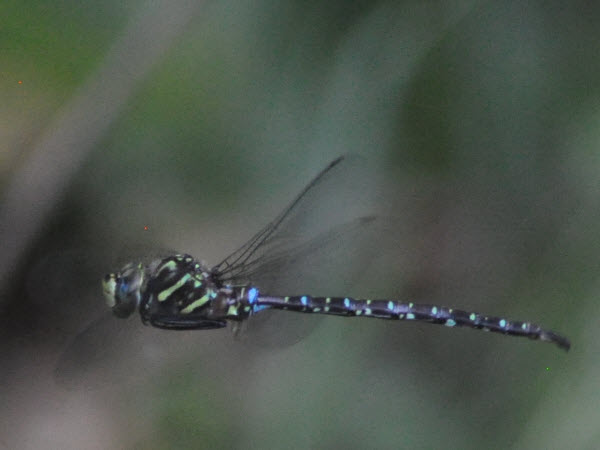
A dragonfly, hovering over our water garden. The trick was getting the camera to focus on the dragonfly and getting the picture before the dragonfly zipped off - I got quite a few empty pictures or pictures where the dragonfly was just a grey blur!
The dome shaped Moon Jellyfish, in the Monterey harbor in large number, behind the piers on a very windy day.
An elephant seal and her pup, taken at Año Nuevo State Park, near Santa Cruz. More photos and videos.
On the Cape, a wild turkey was perched on a fence, and tolerated my walking right past. Initially the baby was hidden under the wings of the parent - not visible until they stood up!
Sand Pipers, these near Monterey. It is entertaining to watch groups of these birds around the edge of the water as the tide comes in - scurrying as a group to stay ahead of the water, and occasionally having to resort to flight. Here I like the way the white frothy background of the surf brings out the sharp contrasting markings on the bird.
This Black-headed Grosbeak was quite the show-off - clearly very used to people at the top of the high peaks area of Pinnacles National Park. The colors of the rock wall are outstanding, and make a nice backdrop!
California Condor. So much to know - an amazing story behind the existence of this bird in southern California. The condor was extinct in the wild in 1980 - the population had fallen to 22 birds or so, and all remaining condors were captured and placed in either of two zoos, where care over ensuing years led to a growing population and steady release into the wild - to the point where today there are several hundred birds in the wild. When I looked up I thought I was seeing vultures - but not. These birds have a 10 foot wing span. Like vultures they have a head without feathers and feed of carcasses. They are magnificent birds, can fly to 15,000 feet, travel 150 miles in a day. I hiked with family up some 2,000 feet to Hawkins peak in Pinnacle National Park - and had a condor open its wings on a rock just above my head - breathtaking the size of the bird! Notice the numbered tag in the photo - a black 6 with a dot - every condor that has been released has a tag.
A toad, vocal sac inflated, in a vernal pool, late April, on a bright, sunny, warm spring afternoon, after a drizly and cold morning. It would seem that the air from this sac would be used to produce the incredibly loud singing these toads are producing - sort of like a bagpipe - and yet the sac does not dimish in size while the toad sings. It turns out the sac is used differently - it acts as a resonating chamber to amplify the sound the toad is making. More images and a video. Ref: www.naturalheritage.state.pa.us
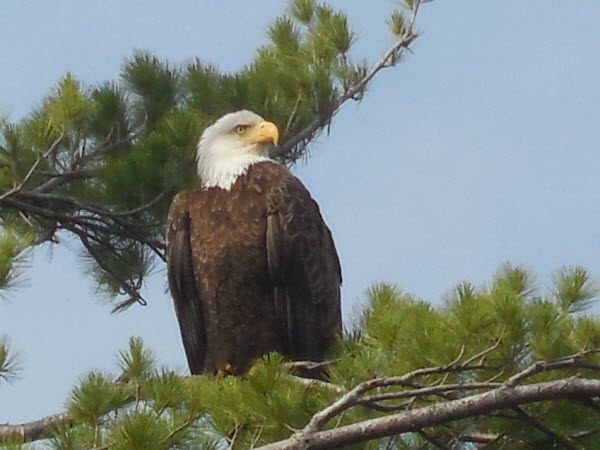
Bald Eagle - Lake Megunticook, Maine
A heron, very much aware of my presence, of course. But - the foliage is thick on the bank, and I was able to shoot through an opening with a good line of sight, and so closer than I would otherwise be.
At night loons will call across the lake - such a pleasure to hear! This Maine lake has a number of arms. At night there will be a polyphonic symphony of voices from the different arms calling to each other. In the sound bite I can hear at least four distinct voices. I recorded this very late at night using my camera - the video was black, of course, and then I stripped out the audio. One loon was around to my left, one very close by to my right, and one quite some distance away in the north arm. A fourth is very faint - could almost be an echo.
Sea otters are such fun to watch - playful, visible. Often they can be found in kelp beds, perhaps tethered and floating as a group - and too far for a good picture. But I came across a chanel leading into an inner harbor, and the tide was coming in. Sea otters were drifting in with the current, diving to find food at the bottom and then floating on the surface to eat. All conveniently close to the edge of the channel for a good photo!
Skunk cabbage is among the first plants to arrive in the very early spring, often pushing up from frozen ground through ice and snow, in wetland areas. Today I saw quite a number of plants, the third day of March in New England. Inside the hard shell (spathe) is the spadix - a small knob covered by yellow flowers. And, the skunk plant is one of the few "warm blooded" plants, through the process of thermogenesis, producing heat via mitochondria and stored fats. See more - skunk cabbage
Indian Pipes are a plant with no chlorophyll, and hence the white plant - leading to the question of how such a plant can find nutrients to grow. The Indian Pipe flower is also white, turning color after fertilization.
Milkweed seeds unfolding from a seedpod, late fall.
Barred owl, Estabrook Woods, Concord, MA
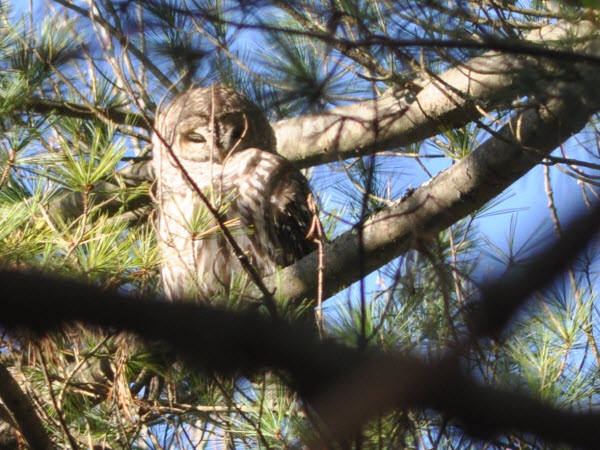
Coopers Hawk, becoming more prevalent in the neighborhood as rabbit and squirrel populations blossom. And our chickens.
Almost a full moon, and very yellow as it was just making its appearance above the horizon. This particular night there was a striking cloud cover, so there were only glimpses of the moon. The sky page has more, including a full lunar eclipse.
Beavers have a significant presence in wetland areas of Massachusetts. It is easier to find their dams and lodging than to see the animal, and just lucky to get a photo of a tail slap!
House Cricket - nicely set off by the red door of our chicken coop!
What takes the place of dyeing Easter eggs after the kids grow up? Dyeing the family dog!
We used chalk - sidewalk chalk fed to a food processor. Followed by a bath at the end of the day, after parading through the neighborhood.
Needle ice - ice crystals that that form just under the surface of the ground, in winter under conditions where warm water is pushing up at the boundary of frozen ground.
Is that an oil slick or something of biological origin that is often seen in streams and wetland areas? If the surface is fractured, it may be mineral, produced by iron bacteria!
Oak Gall - these structures can often be seen in the woods, and are the result of a particular wasp, laying eggs in the central vein of a newly forming oak leaf.
Frog on a Lily Pad - I am always stopping to review the Lily pads, hoping to find a frog - I finally found one!
Chicken egg tooth - on the tip of the beak - the chick uses this to break out of their shell. And more - follow the link!
Did you know that the Aster, a composite flower, is composed of hundreds of tiny flowers? The image below is zoomed in from the image above!
Tussock Moth Caterpillar, feeding on Milk Weed. A cluster of these caterpillars can entirely consume all of the leaves of a milkweed plant in a day or so. See just the head of three in a row, working forward on the edge of a leaf.
A double rainbow! There had been a strong storm, very dark skies, blowing out to the East, with the sun low in the West - perfect for a rainbow! The secondary is formed from light of the primary rainbow, and so the colors are reversed - see how the order of color is blue - yellow - red in the primary, and red - yellow - blue in the secondary!
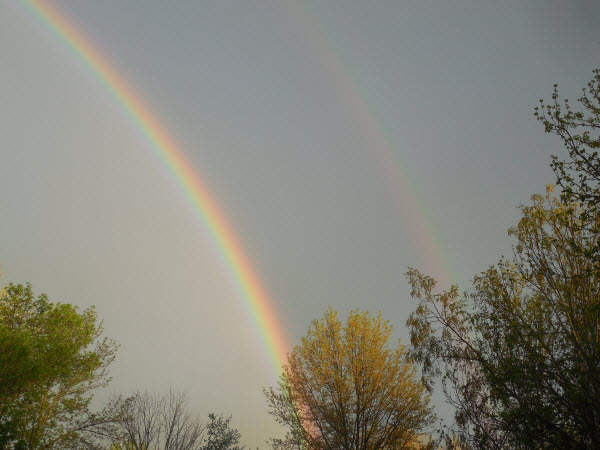
#CamOwenPhotos


